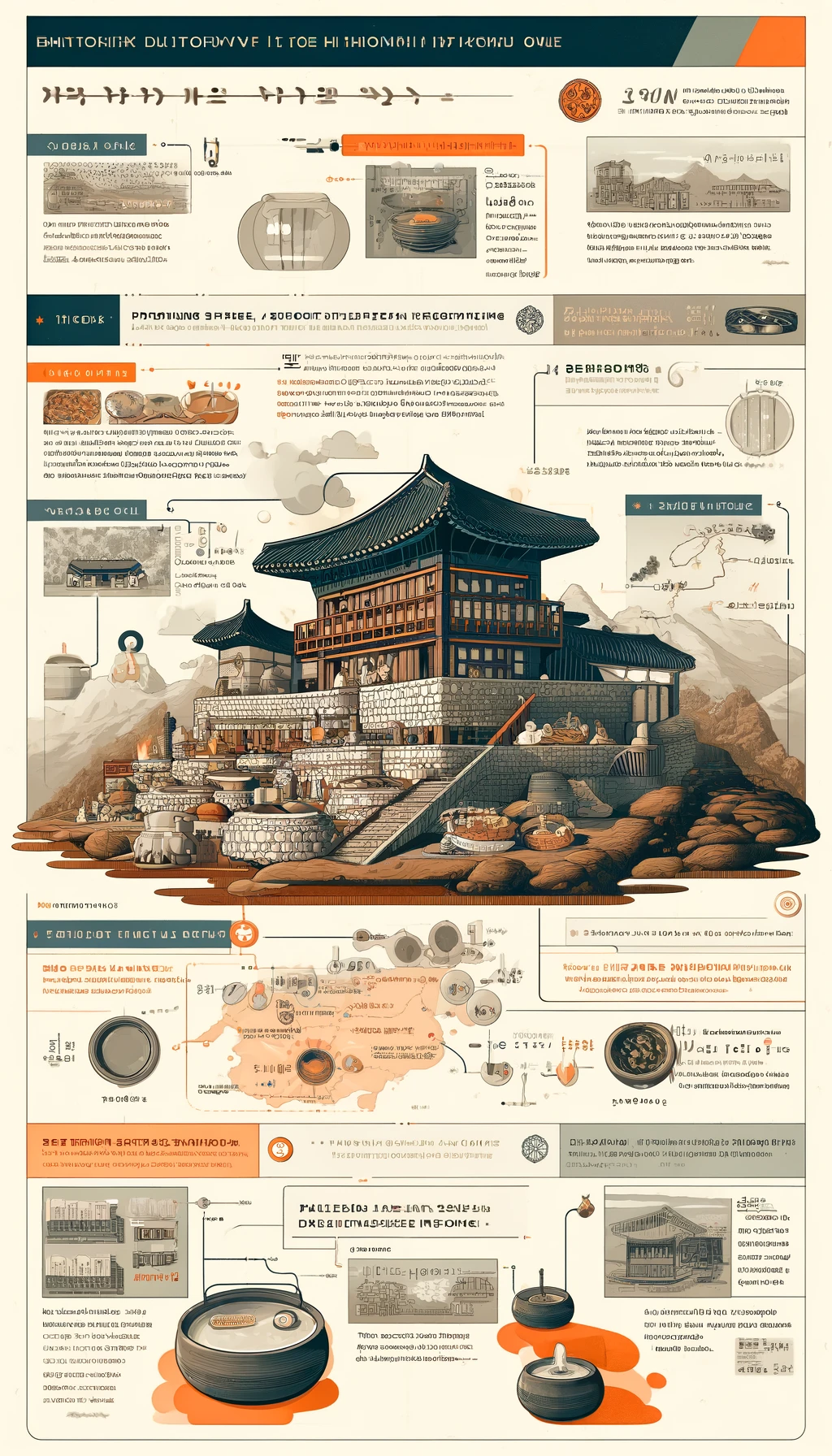목차
The Origins of Ondol – Tracing Back to Ancient Korea
Introduction

The traditional Korean ondol heating system, known for its unique underfloor heating mechanism, is a testament to the innovative spirit of ancient Korean civilization. The ondol (온돌), translating literally to “warm stone,” has played a pivotal role not only in the architectural evolution of Korea but also in shaping the daily lives and cultural practices of its people. This blog post delves into the origins of ondol, tracing its development from ancient times through to its integration into modern heating solutions, illustrating its significance and enduring legacy.
Historical Emergence
Ondol’s history can be traced back to the Proto-Three Kingdoms period of Korea, around the first century BC. Initially, these heating systems were primitive, primarily used by the elite in the royal palaces and homes of aristocrats. The earliest forms of ondol, found in the remains of the Goguryeo kingdom, were simple structures. Archaeological sites such as those in Pyongyang and other northern areas of Korea show remnants of these early ondol systems, indicating their widespread use due to the harsh, cold climates.
Technical Evolution and Cultural Integration
The technical design of ondol is ingeniously simple yet highly effective. The system involves a stone or concrete platform built over a series of horizontal smoke passages. A fire is lit in an external fireplace known as an “agungi,” and the smoke and heat generated are channeled under the floor, heating the stones and subsequently the room above. The heat retained in the floor stones provides continuous warmth, even long after the fire has extinguished.
During the Three Kingdoms period (57 BC – 668 AD), the ondol system saw significant refinement and began to spread throughout the peninsula. By the time of the Unified Silla period (668-935 AD), ondol was common in many homes, reflecting its adaptation beyond the aristocracy and royal use. The system’s efficiency made it ideal for Korea’s long winters, becoming a crucial element in residential architecture.
Cultural Impact
The cultural impact of ondol in Korea is profound. Traditionally, Koreans preferred to sit and sleep on the floor, and the warmth provided by ondol made this practice comfortable throughout the year. This preference influenced various aspects of Korean life, including the design of furniture—or the lack thereof—focusing on low tables and floor cushions instead of raised chairs and beds. Social practices, such as gathering around a low table for meals or family activities, reinforce the communal aspect fostered by the central warmth of ondol.
Philosophical and Health Implications
Philosophically, ondol resonates with the Korean ideal of living in harmony with nature. The system uses natural materials and principles of heat convection, reflecting a sustainable approach long before modern energy efficiency concerns. Health-wise, ondol is believed to promote circulation and respiratory health due to the warmth permeating from below, which is considered healthier than the dry, forced air from modern heating systems.
Archaeological Evidence and Scholarly Research
Archaeological discoveries and research have provided substantial evidence of ondol’s historical development. Excavations at ancient sites have revealed variations in ondol construction, showing how regional adaptations were made to suit different climatic conditions across Korea. Scholarly studies, particularly from Korean universities, continue to explore ondol’s technological advancements and its implications on ancient Korean engineering and architecture.
Modern Adaptations and Legacy
In contemporary times, ondol has been adapted into modern floor heating systems that use electricity or hot water instead of wood smoke. These modern systems retain the principles of heat retention and distribution, proving the timelessness of the ondol concept. Today, ondol-inspired heating is not only prevalent in Korea but has also been incorporated into eco-friendly building projects around the world, showcasing its relevance and adaptability.
Conclusion
The origin of ondol in ancient Korea illustrates a remarkable blend of innovation, cultural evolution, and environmental adaptation. From its rudimentary forms in ancient palaces to its sophisticated modern applications, ondol remains a defining feature of Korean heritage. Its ongoing evolution and enduring presence underscore its significance as more than just a heating technology but as a cultural icon that has warmed countless generations through the millennia.
Go Blog Home
